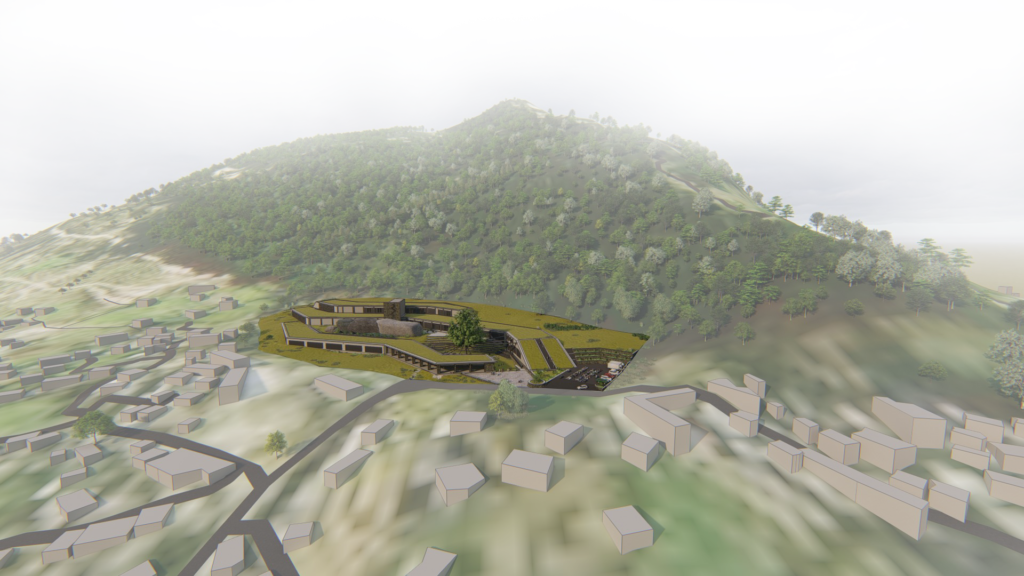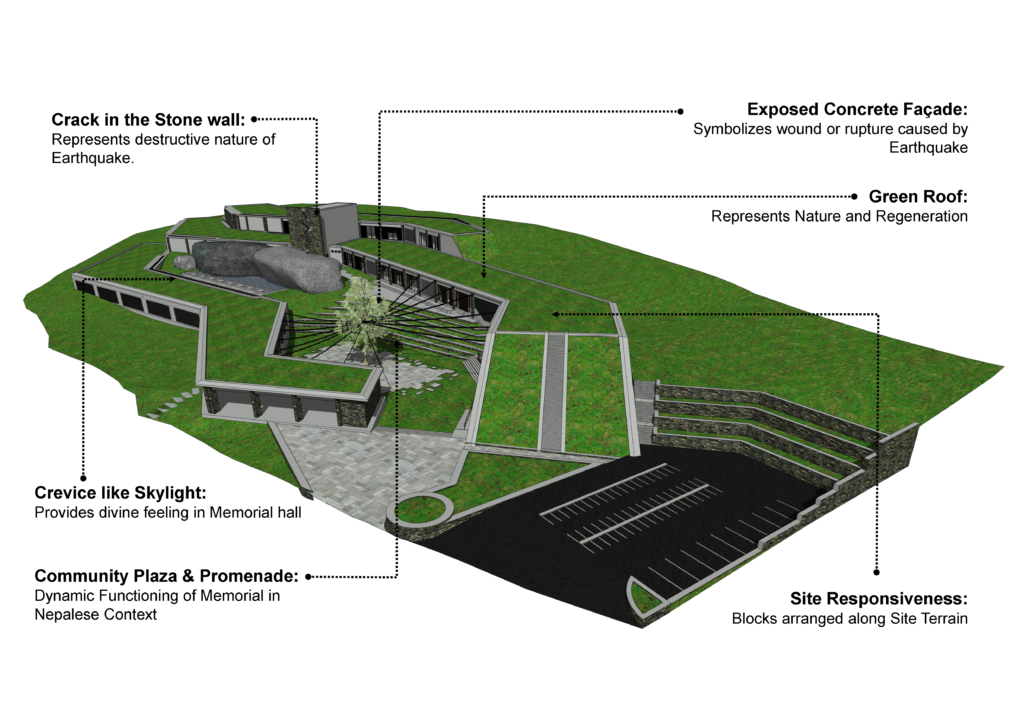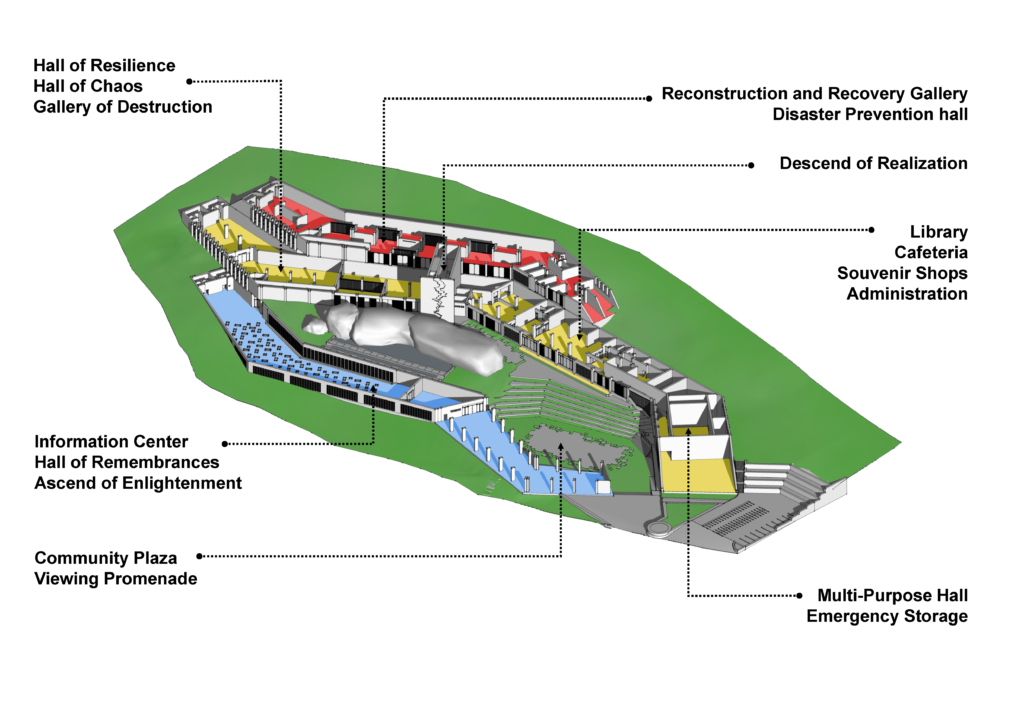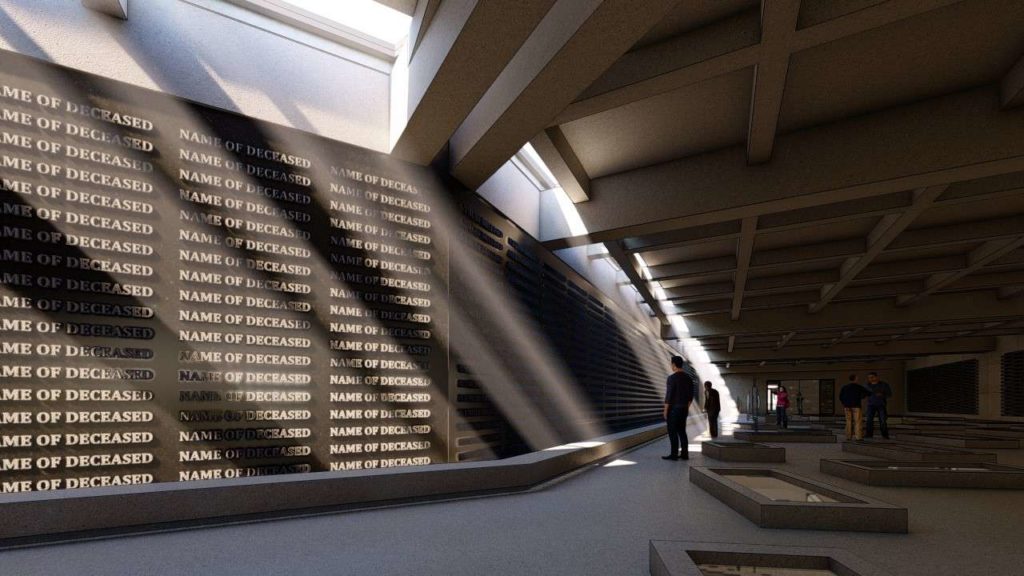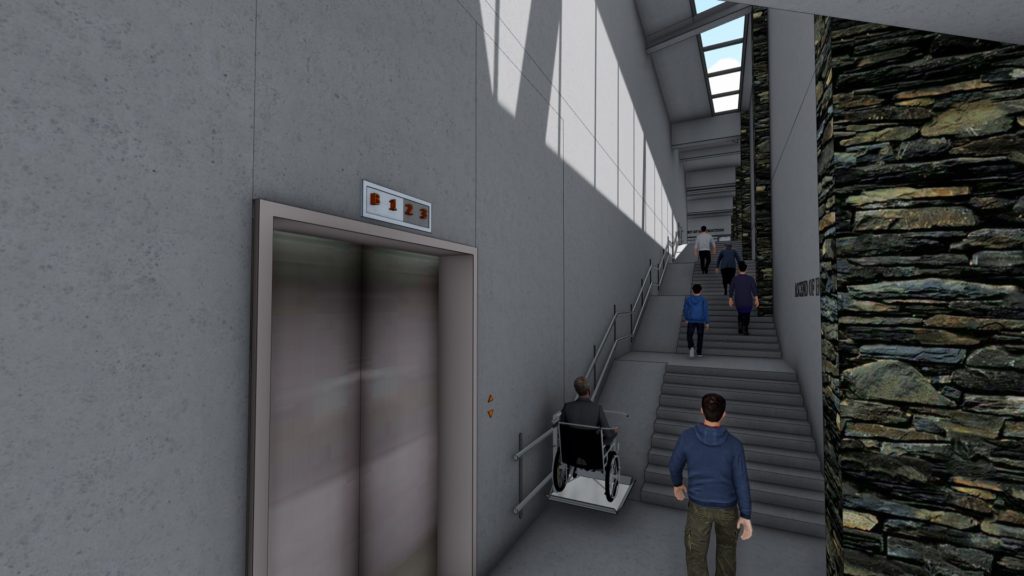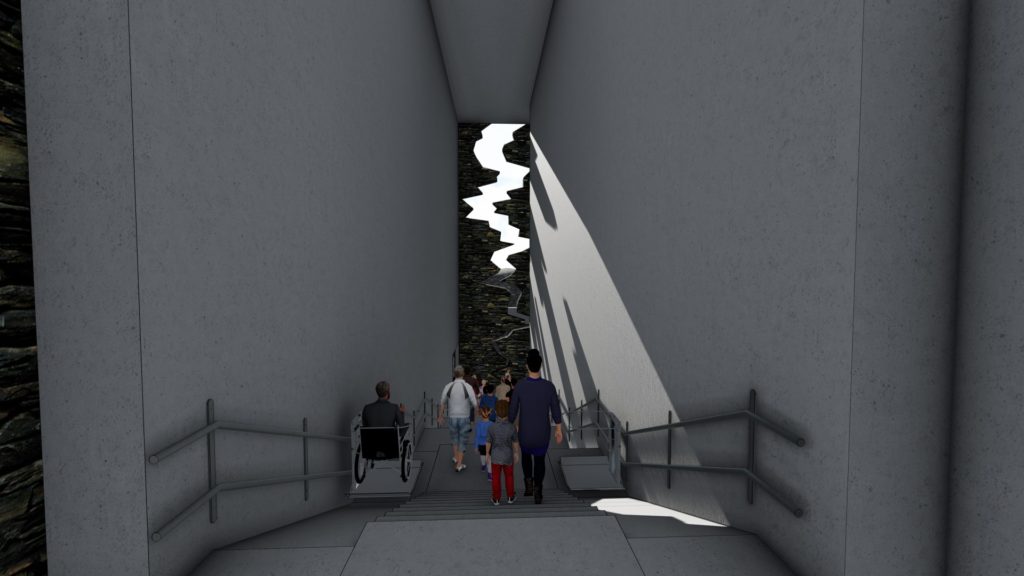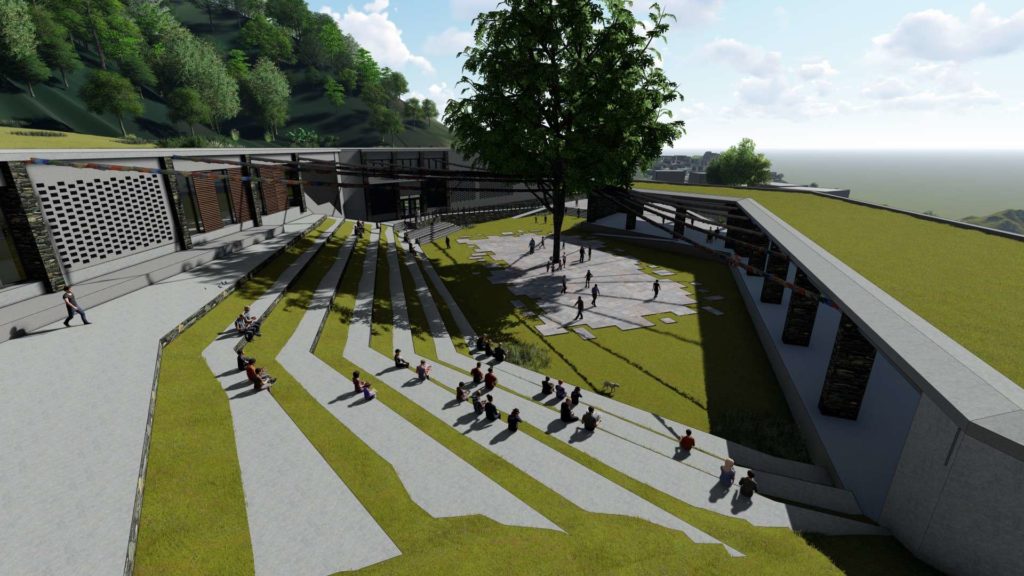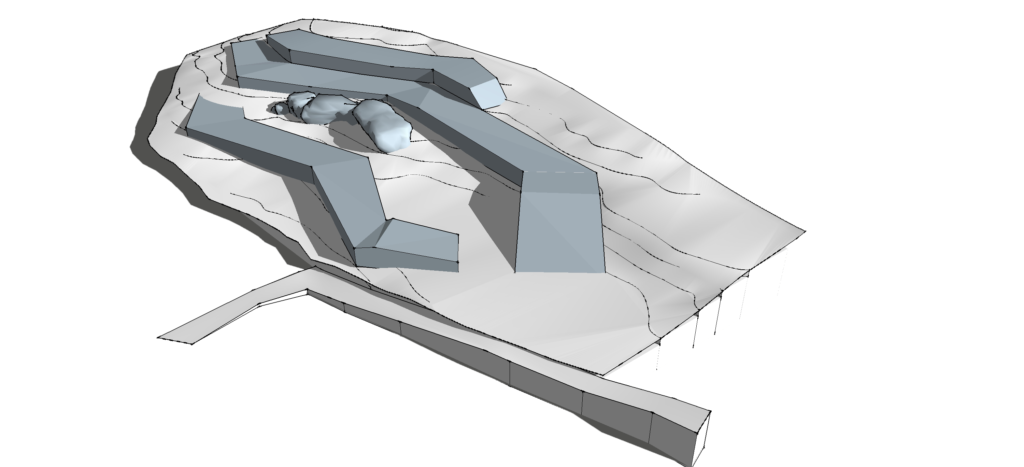Bachelor’s Degree in Architecture Thesis 2018
Thesis Supervisor: Asso. Prof. Dr. Sanjaya Uprety
“The creation of buildings for the commemoration is one of the oldest purposes of architecture. The expectation that works of architecture can prolong collective social memory of persons or events beyond the mental recollections of individuals who knew or witnessed them at first hand has been a regular feature of architecture since antiquity, ···“
Introduction
The 7.6M Gorkha Earthquake, 2015 caused massive destruction of life and properties causing serious nationwide disruption of everyday life and a major setback in social and economic infrastructure development. With no proper structure or space dedicated to remember and honor the victims, the memorial would act as a social need of the present as it not only revives the memory of misfortune but also provides hope for a better, strong, and resilient future.
From an architectural perspective, Norden (2003: p1) defines memorials as “… the places that embrace meanings in their design to remind and foster understanding among members of a community they represent”. As such, the memorial should not just represent the memory of loss, it should provide us with a context for remembering the past, engaging the present, and aspiration for the future.
Site and Context
The site is located northeast of the Barpak settlement and lies slightly elevated; implying that it is visible from most parts of the settlement and vice versa. With structurally inefficient stone structures, most of the settlements collapsed during the earthquake, causing the locals to avoid using stone for building construction. Locals recall stone as an attachment to the memory of the ill-fated event. Hence, stone acts as a major element that evokes the memory of the earthquake. Inspired by the culture of the Gurung community who use stone stacking as a memorial in the form of a grave, a similar vocabulary has been used in the design of the memorial.
Space Requirements
Inferring literature review and case studies, a well-designed memorial integrates people (victims, survivors, rescuers, etc.), process (rescue process, restoration & reconstruction), and spirit (rescue process, restoration & reconstruction) to serve its purpose of commemoration. For that, Memorial facilities (memorial wall, monument, pathway, garden, square, public plaza), Educational facilities (Museum, Documentation center, Information center, Libraries, Preparedness center), Recreational and supporting facilities (Administration, Cafeteria, Services) has been proposed.
Concept
The memorial complex has been designed to represent a scar in the landscape symbolizing the wound of the unfortunate event and how it heals with time, yet the scar remains; to remind us to be better prepared for the next time. The proposed site has a gentle slope down from east to west, overlooking the settlement. Three single-storied blocks have been arranged along the site topography blending with the site as well as the existing vernacular architecture of Barpak and doesn’t look imposing to the existing scale of settlement. The blocks, thus, are only exposed towards the settlement. The exposed façade of grey and rough texture of concrete and stone symbolizes grief and suffering. These grey blocks stretching along the site look like a crack on the ground caused by the earthquake tremor. At the same time, blocks merge with the site topography and the green roof extends to the landscape representing the regeneration and healing nature of time. In addition to that, a three-story block in the middle of the complex consists of a stone wall with a crack-shaped opening aligned with the visual axis which subtly draws attention from across the settlement.
Memorials in the Nepalese context are built as chautaras, patis, dharas, inars, etc. which signifies the role of the dynamic functioning of commemorative spaces. Such salient feature has been incorporated into the design with the inclusion of community plaza and porch of vernacular architecture.
Designed along a memorial path, the didactic and symbolic elements impart meaning-making through sequences of storytelling. Didactic elements impart meanings directly to the observer while symbolic elements depend on the interpretation of the observer to impart the desired message. The meanings imparted by various spaces guide visitors and trigger the memory within. The memorial also acts as a learning center. The memorial offers simplicity to reflect on life, death, renewal, hopes for our fragile world. It offers a journey from the energetic jumble of daily life to the place of stillness, from our daily world to the transcending facts of life, death, continuity, hope, and celebration. The design offers a quieter softer space for reflection. It offers the sustenance of nature, the endurance of stone, the calmness of the water, and the space of stillness.
Memorial Journey
At the first level, ‘Hall of Remembrance’ has a grey concrete interior finish creating a somber interior environment to facilitate contemplation. A reflective granite wall with the names of all the victims etched on it symbolizes the virtual realm of the dead, through which the observer reflects the memory of the deceased. A small crevice-like skylight is provided which lightens just a required amount of the memorial wall to provide a divine effect on the interior of the hall. The alternately stacked stones on another side of the wall create shifting vistas encouraging movement across the hall. The ‘Ascend of Enlightenment’ consists of a staircase sky-lit to provide a feeling of hope and give a divine feeling of penetration of light rays into a darker world.
Moving on to the second level, ‘Gallery of Destruction’ displays media elements that inform about the destruction caused by the earthquake. A panoramic view of the Barpak settlement showcases as a living example of the changes brought by the earthquake. ‘Hall of Chaos’ has been designed with zigzag walkways and uneven floors to induce slight discomfort which would evoke chaos and confusion as experienced during a disaster. The ‘Hall of Resilience’ is where stories of rescue, cooperation, and resilience of rescuers and survivors are shared through audio-visual displays.
The next level includes ‘Disaster Prevention Hall’ which educates visitors about disaster and vulnerability prevention methods. On the other hand, ‘Reconstruction and Recovery Hall’ provides details of reconstruction and recovery.
A single flight staircase facing the crack-shaped opening at ‘Descend of Realization’ guides visitors to the memorial plaza reminding the unfortunate incident once again so that the visitors are encouraged to contemplate upon returning to the plaza. Through the memorial journey visitors will have observed the impact of positive and negative changes brought by the event as they are left with the question: Was the event just an unfortunate one or can it be a new beginning for a better future?
Norden, T. (2003). A Constructivist Model for Public War Memorial Design that Facilitates Dynamic Meaning Making.
